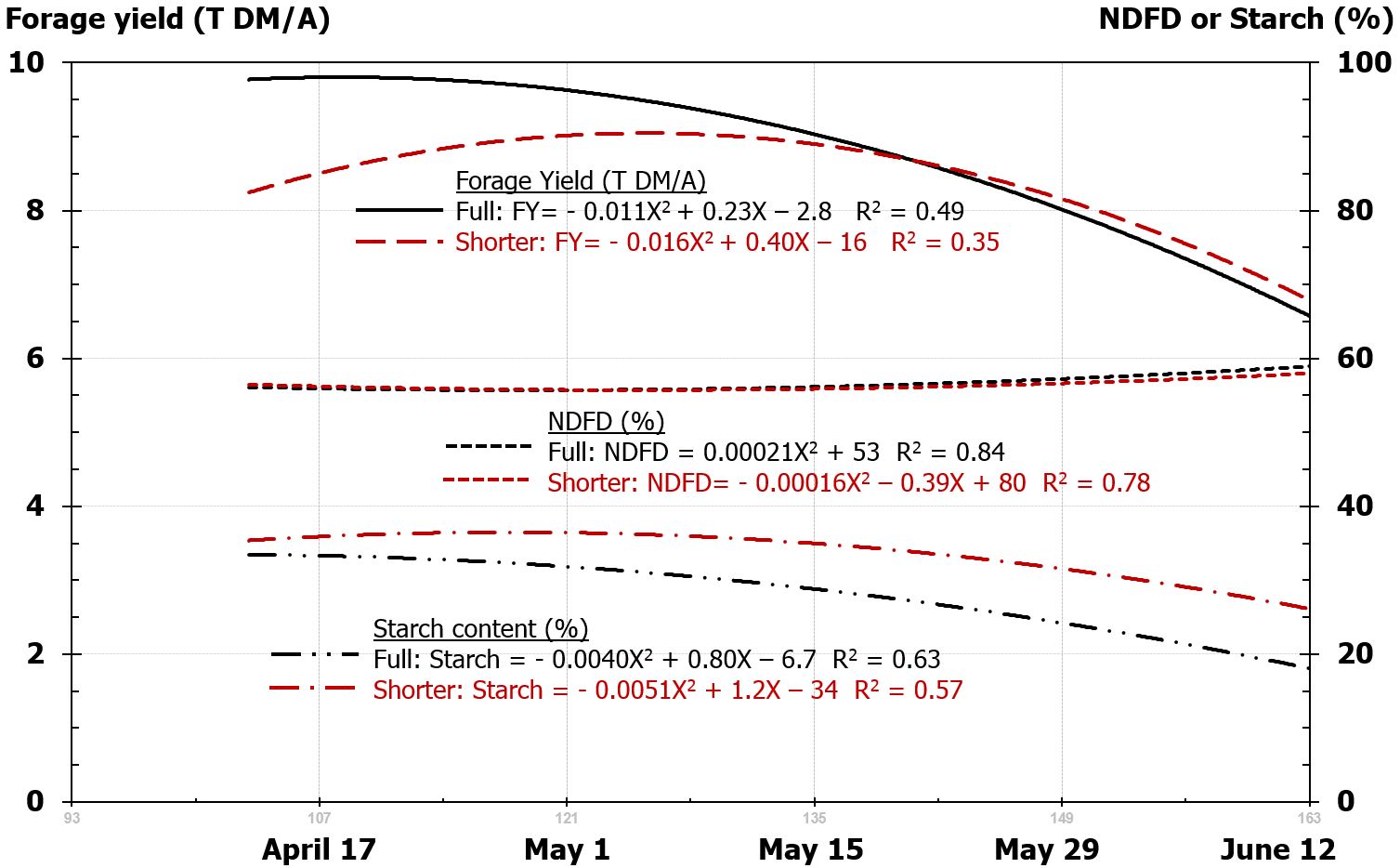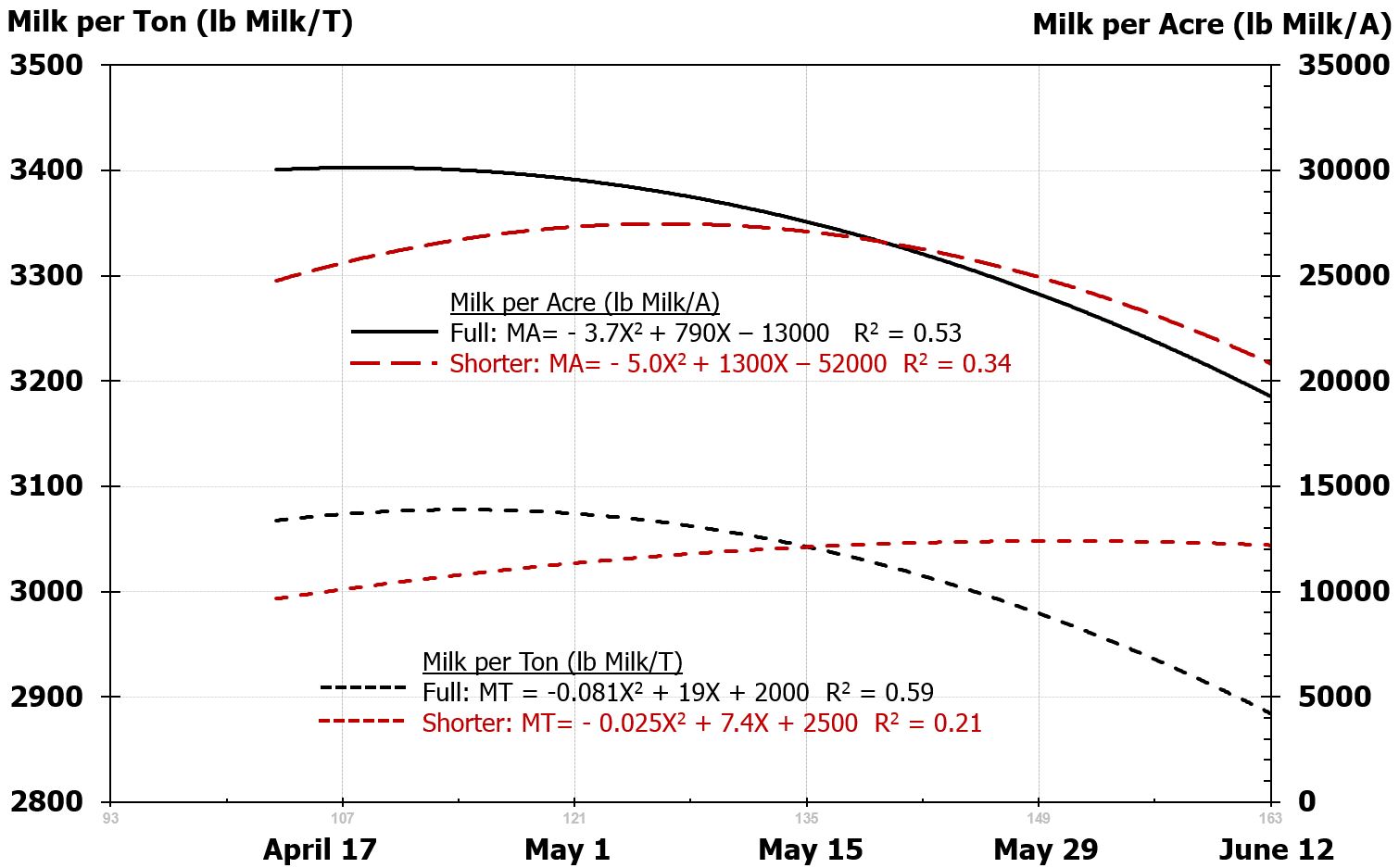| May 23, 2013 |
Field Crops 28.5 - 113
|
|
|
Switch Dates For Corn Silage
Joe Lauer, Corn Agronomist
The Wisconsin USDA-NASS Crop Progress report for May 20 indicated that only 43% of the corn crop had been planted. For Week 20, only the growing seasons of 1996 (38%) and 1979 (40%) have had slower corn planting progress. With the unsettled weather of this past week over much of the state, planting this year will be further delayed. Crop reporting districts with the slowest planting progress include the North Central (24%), North West (31%) and East Central (31%).
We have been discussing the importance of switch dates for dry and high moisture grain production by summarizing data for the last 10 years at one farm (Arlington, WI). As planting delays continue, many farmers are thinking about changing their end use of corn and are wondering about switch dates for corn silage. This decision is complicated because of the changes that occur in yield and the energy pools found in stover (ivNDFD) and grain (Starch content).
Between 2003 and 2008, we conducted trials that compare corn silage yield and quality of full- and shorter-season hybrids. Forage yield was greatest with full-season hybrids for early planting dates (Figure 1). The regression lines converged on about May 20, but forage yield was not significantly different after that date unlike what has been previously described for grain yield. Little difference was seen between full- and shorter-season hybrids for digestibility of the stover energy pool as measured by ivNDFD. However, shorter-season hybrids had higher starch content on every planting date even though grain yield was lower until after May 24.
Figure 1. Corn forage yield, ivNDFD and starch content response offull-season hybrids (104-108 d RM) and shorter-season (94-98 d RM) hybrids to planting date during 2003 to 2008at Arlington, WI (N= 324 plots).

Forage yield, ivNDFD and starch content values were used in the Milk2006 model to calculate Milk per Ton and Milk per Acre (Figure 2). Both Milk per Ton and Milk per Acre of full-season hybrids were greater than shorter-season hybrids when planted early. For Milk per Ton, a switch date occurs around May 15, when the shorter-season hybrids have greater Milk per Ton than full-season hybrids. However, around this switch date Milk per Acre differences between full- and shorter-season hybrids are not that much different. A slight Milk per Acre advantage is seen for shorter-season hybrids until about June 1 and then the gap begins to widen.
Figure 2. Corn forage milk per ton and milk per acre response offull-season hybrids (104-108 d RM) and shorter-season (94-98 d RM) hybrids to planting date during 2003 to 2008at Arlington, WI (N= 324 plots).

Thus, if the end-use of corn will be for silage, then farmers can stick with full-season hybrids longer than if corn is used for grain. By June 12, the difference between full- and shorter-season hybrids is about 2000 pounds of milk per Acre (10%).
Another question I have received is, "What about growing brown midrib corn as a way to maintain the energy pools of stover rather than grain?" Between 2009 and 2012, we compared switch dates for full-season conventional and brown midrib corn hybrids. Watch for a future blog, when we will describe these yield and quality differences due to planting date.